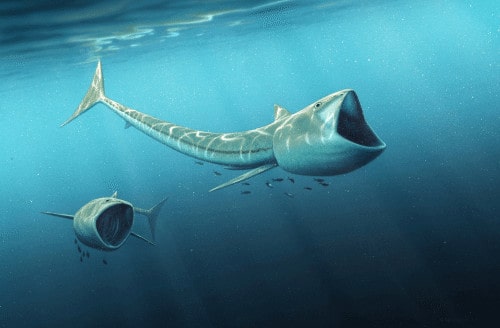Researchers have uncovered a couple of new fossils of fish that dined on plankton. They come from the genus Rhinconichthys, lived around 92 million years ago, and to say they were big-mouths doesn’t do them justice.
Examples of Rhinconichthys are rare, according to DePaul University’s Kenshu Shimada. Just one previous example has turned up, in the United Kingdom, the paloeobiologist explained.
That’s why a new skull found in Colorado is so exciting. Along with a reconsideration of another skull from Japan and scientists have now tripled the number of Rhinconichthys they have to study.
Said Shimada: “I was in a team that named Rhinconichthys in 2010, which was based on a single species from England, but we had no idea back then that the genus was so diverse and so globally distributed.”
His new study will appear in the next issue of the journal Cretaceous Research.
The international research team behind the new find includes scientists from government, museum, private sector and university careers.
Rhinconichthys comes from an extinct group of bony fish known as pachycormids. This new work focuses on an elusive form that made plankton its main food source.
At 6.5 feet in length, Rhinconichthys was no minnow. It reportedly had one pair of bones called hyomandibulae that formed a big oar-like lever to protrude and swing the jaws open extra wide, like a parachute, in order to receive more plankton-rich water into its mouth.
“Based on our new study, we now have three different species of Rhinconichthys from three separate regions of the globe, each represented by a single skull,” Shimada noted. “This tells just how little we still know about the biodiversity of organisms through the Earth’s history. It’s really mindboggling.”

